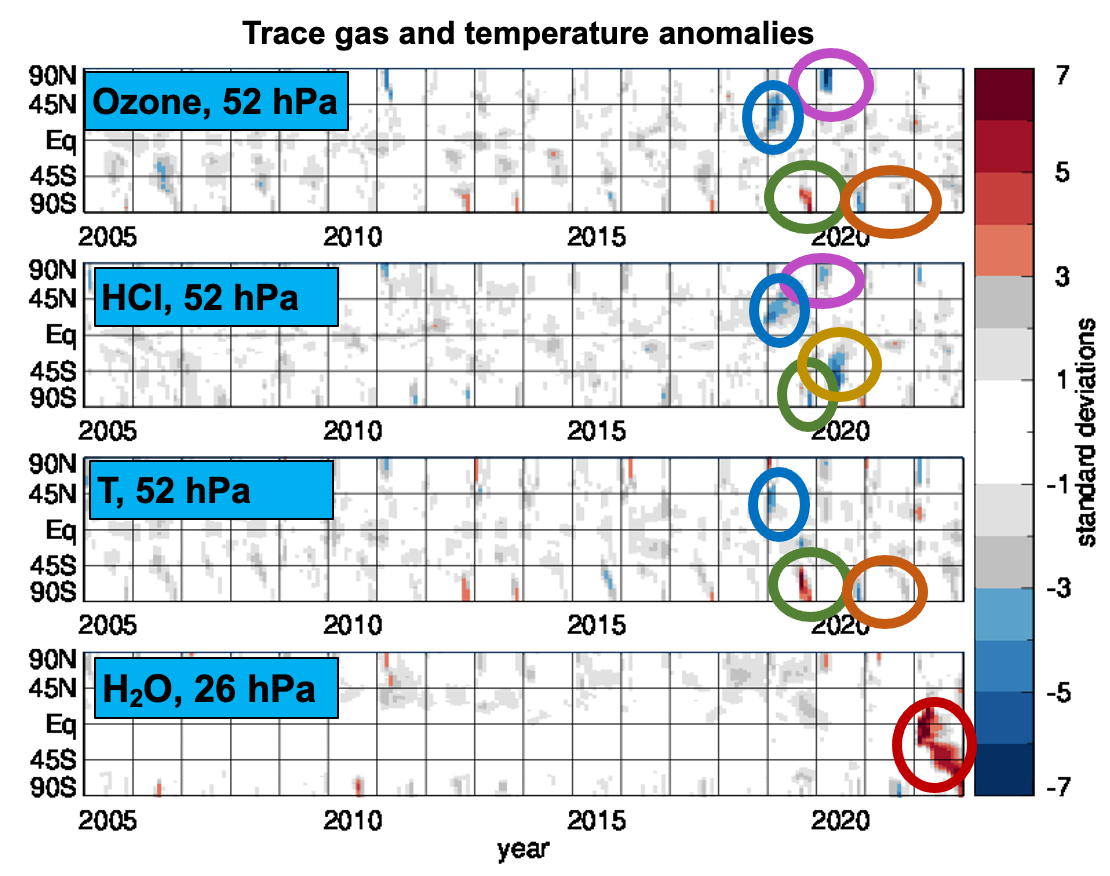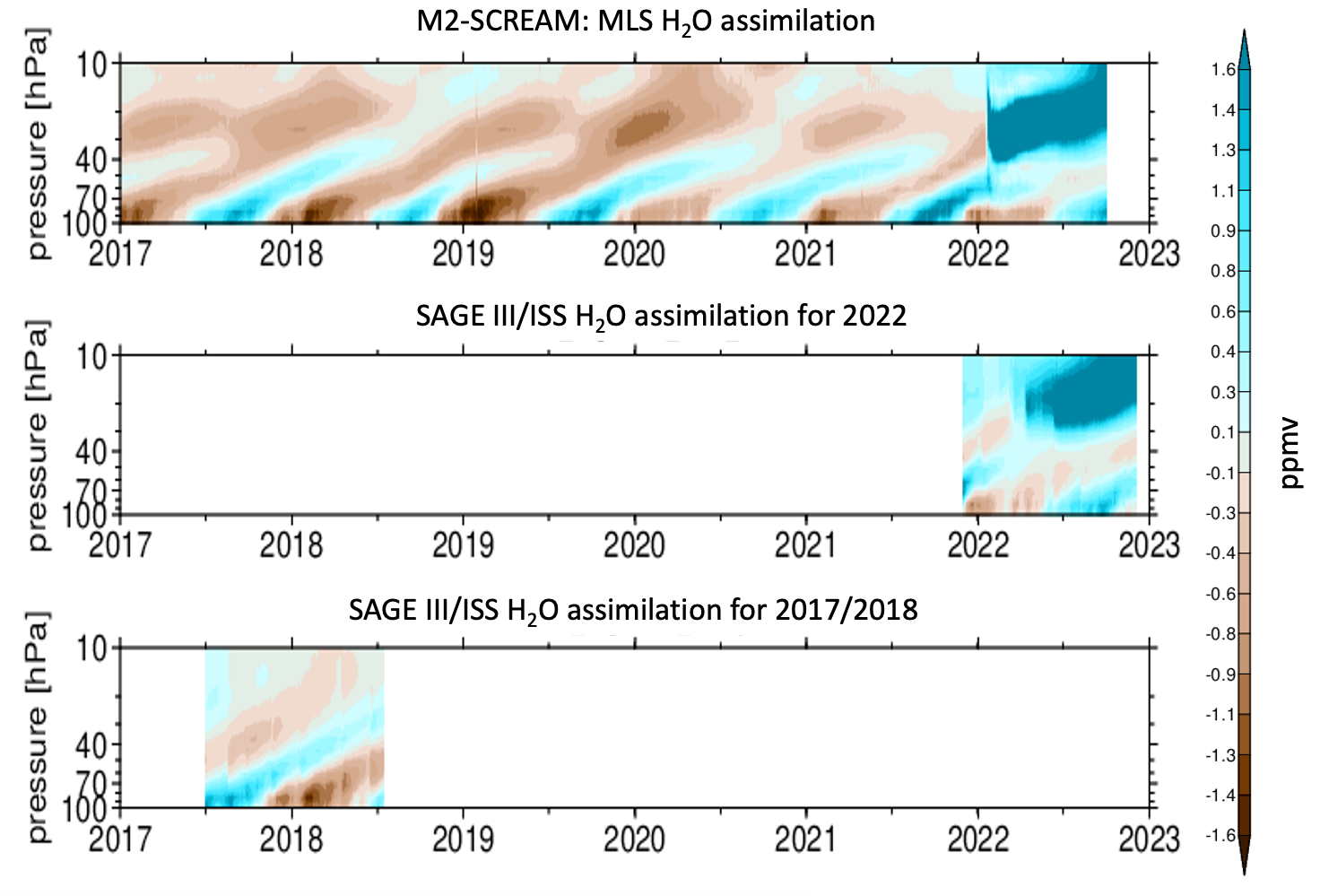Monitoring Lower Stratospheric Composition from Space using Reanalysis of NASA Satellite Observations in the EOS and Post-EOS Era
S. Pawson1, K.E. Knowland2, P. Wales2, K. Wargan1 and B. Weir3,1
1NASA Goddard Space Flight Center (GSFC), Greenbelt, MD 20771; 240-397-1481, E-mail: Steven.Pawson-1@nasa.gov
2NASA Goddard Space Flight Center (GSFC), Global Monitoring and Assimilation Office, Greenbelt, MD 20771
3Universities Space Research Association (USRA), Colombia, MD 21046
NASA’s Modern-Era Retrospective analysis for Research and Applications (MERRA-2) reanalysis assimilates observations from a wide variety of sources, including the Earth Observing System (EOS) platforms. Stratospheric ozone profile data from the Microwave Limb Sounder (MLS) on EOS Aura represent a consistent ozone time series since 2004, that captures the large signal of interannual transport variations which dominate the recovery trend in the lower stratosphere since the early 2000s. In addition, the MERRA-2 Stratospheric Composition Reanalysis of Aura MLS (M2-SCREAM) further presents a more complete data series of assimilated stratospheric constituents, allowing for the investigation of long-term changes in water vapor and other key gases, in context of the dynamic atmosphere.
With the planned decommissioning of the EOS platforms within the next two years, the continuity of the climate records for atmospheric constituents will be broken. This presentation gives an overview of how feasible it is to maintain a comprehensive record of ozone and water vapor in the stratosphere using alternative instruments currently still in orbit. For ozone, the OMPS-LP observation record from the Suomi-NPP and the JPSS-2 platforms provide suitable spatio-temporal coverage to extend the utility of multi-platform reanalyses in the lower to middle stratosphere. For water vapor, information from the SAGE-III occultation instrument aboard the International Space Station provides information that has potential for maintaining the record in a limited latitude band. The discussion includes some examples of steady changes and of extreme events that occurred over the almost two decades of MLS observations.
Figure 1. Stratospheric extrema from a chemical reanalysis of Aura MLS observations. Monthly mean detrended anomalies of ozone, (HCl), temperature, and water vapor at selected pressure levels, calculated from M2-SCREAM. Values outside three-standard deviations from the mean are shown in color. Here, the standard deviations are computed over the 17-year period between 2005 and 2021. The colors illustrate: a dynamically driven anomaly in early 2019 (blue); a rare sudden stratospheric warming over Antarctica in late 2019 (green); an exceptionally string Arctic polar vortex in 2020 (purple); long-lasting Antarctic polar vortices in 2020 and 2021 (orange); and the Hunga-Tonga Hunga-Ha'apai (HTHH) eruption in 2022.
Figure 2. Illustrating the potential continuity of stratospheric moisture in reanalyses as we transition from MLS to SAGE III/ISS observations.
Time series of tropical stratospheric water vapor anomalies from M2-SCREAM (MLSassimilation) and two SAGEIII/ISS assimilation experiments. Good representation of the seasonal pattern (“tape recorder”) and the moisture enhancement from the Hunga-Tonga Hunga-Ha'apai (HTHH) eruption in 2022 demonstrates usefulness of SAGE III/ISS data for reanalyses. MLS data post 2023 will be essential for homogenization as the impacts of HTHH on the stratosphere continue.


